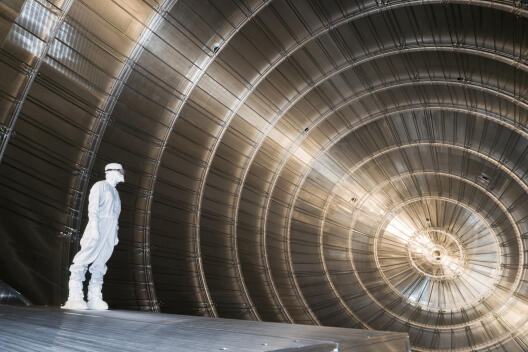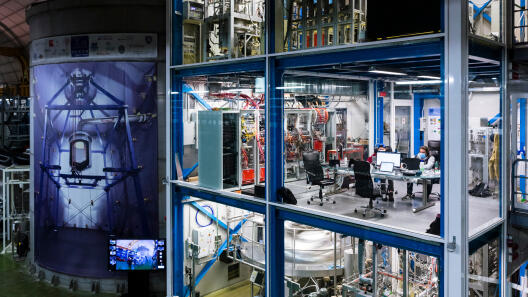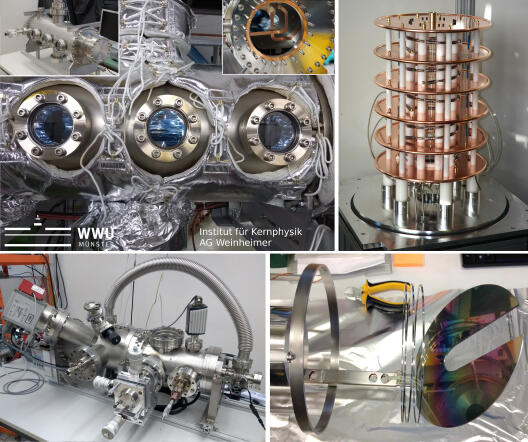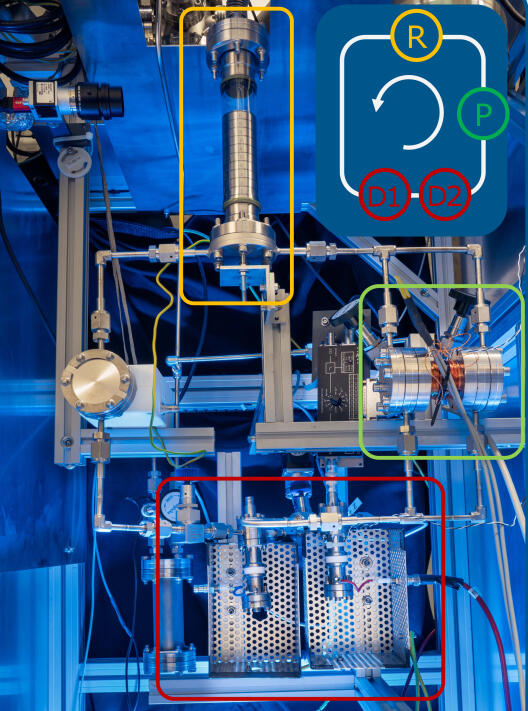Research in the group of Prof. Dr. C. Weinheimer
The Weinheimer group is interested in fundamental astroparticle and particle physics questions, such as how heavy are the most common particles in the universe besides photons, the neutrinos. Are there sterile neutrinos or are neutrinos identical to their antiparticles? Or what is the nature of dark matter, which has a mass density in the universe 5 times higher than the normal matter we know? To this end, we are significantly involved in the two leading research projects in particle and astroparticle physics, KATRIN and XENON. Furthermore, we apply our experimental techniques in two areas of atomic and medical physics.
Bachelor's, Master's and doctoral theses are offered on all topics in the field of data analysis and simulations as well as on measurements at the experiments and on hardware developments.
The group's research is funded by the Federal Ministry of Education and Research (BMBF), the German Research Foundation (DFG) and by the University of Münster. Further support comes from the German Academic Exchange Service (DAAD) and the Interfaculty Centre Cells in Motion CiM.
Determining the neutrino mass with KATRIN

The international KATRIN collaboration of 20 institutes operates the KATRIN experiment at the Karlruhe Institute of Technology (KIT), the world's leading experiment for the direct determination of neutrino mass. Our Münster group is one of the two largest groups outside of Karlsruhe.We are responsible for several experiment components (e.g. the precision high-voltage system, the 690 m2 large electrode system in the main spectrometer, two special electron calibration sources). Furthermore, we are responsible for important parts of the data analysis. At present, the main projects of the Münster working group are the reduction of some important systematic uncertainties by measurements and data analysis as well as the reduction of the background by the method of the "Shifted Analysis Plane" and, in collaboration with the research group of Prof. W. Pernice from Nanophysics, the development of a novel detector ("aTEF") sensitive to the transverse energy of electrons.
Direct search for dark matter with XENONnT and DARWIN/XLZD

Like its world-leading predecessor experiment XENONT1T, the recently launched experiment for the direct search for dark matter XENONnT is located in the Italian underground laboratory LNGS in the Abruzzo region near Rome. In the international XENON collaboration, our Münster group has taken responsibility for the cryogenic distillation of the noble gas xenon, which forms the active dark matter target of the two-phase xenon time projection chamber. For this purpose, we have developed two unique systems that remove the slightest impurities from the radioactive noble gases Kr-85 and Rn-222 from the 8.5 tonnes of xenon used in the experiment. In our large xenon laboratory, we operate a small copy of the XENONnT detector and develop various technologies and components for the future project DARWIN/XLZD within the framework of the ERC Advanced Grant project LowRad. The DARWIN/XLZD detector, which is an order of magnitude more sensitive, will not only enable dark matter searches down to the so-called neutrino fog, but will also be an observatory for many searches for physics beyond the Standard Model of particle physics. Our second foothold at XENONnT is data analysis, where we are particularly interested in interactions of solar neutrinos with xenon atoms as well as double weak decays of the xenon isotopes Xe-124 and Xe-136, also with regard to neutrino mass, in addition to the search for dark matter.
Photon detectors and precision high voltage for experiments on stored highly charged ions at GSI/FAIR

Highly charged heavy ions are unique experimental objects for the study of fundamental interactions due to their extremely high electric and magnetic fields near the atomic nucleus. The SPARC (Stored Particles Atomic Physics Research Collaboration) collaboration performs, among other things, laser spectroscopy and collision experiments with such highly charged (heavy) ions at the storage rings of the GSI/FAIR research centre in Darmstadt. For this purpose, we develop and operate photon detectors from the soft X-ray to the infrared range at the storage rings ESR and CRYRING and, in the future, at SIS100, as well as at the trap experiment SPECTRAP. Technologies ranging from semiconductor detectors and photomultipliers to spatially resolved multi-channel plates (MCP) are used. We also apply the precision high-voltage methods developed for the KATRIN experiment to determine the high voltage of electron coolers in storage rings to define the ion energy in laser spectroscopy experiments or for the short-time energy shift of ions in impact experiments.
Bold-PET, development of a novel, spatially resolving detector for medical applications (PET)

The novel detector concept "CALIPSO" for positron emission tomography (PET), based on the organo-metallic compound trimethyl bismuth (TMBi) as detection material, was proposed by a working group of the French research centre CEA/Saclay. The transparent liquid with the metal bismuth as the central element allows an efficient conversion of the 511 keV annihilation photons generated in PET scanners into photoelectrons. On the one hand, these generate Cherenkov photons, which allow a precise time signal in fast multi-anode photomultipliers. On the other hand, free charge carriers are generated in the interaction of the electrons with the material, which are to be separated via an applied electric field and detected spatially resolved with the help of a pixelated anode. Together with the working group of Prof. K. Schäfers from the European Institute for Molecular Imaging (EIMI) at the University of Münster and the French colleagues from CEA/Saclay, we are developing a spatially resolved drift detector for such organo-metallic compounds and are investigating various purification methods to purify the TMBi from electronegative impurities to such an extent that electrons and ions generated in the detector medium can be drifted and detected sufficiently loss-free.
